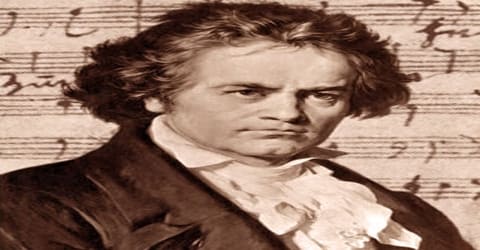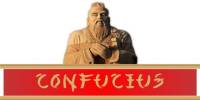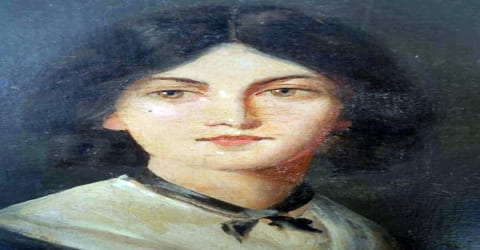Biography of Ludwig van Beethoven
Ludwig van Beethoven – German composer and pianist.
Name: Ludwig van Beethoven
Date of Birth: 17 December 1770
Place of Birth: Bonn, Electorate of Cologne (Germany)
Date of Death: 26 March 1827 (aged 56)
Place of Death: Vienna, Austria
Father: Johann Van Beethoven
Mother: Maria Magdalena Keverich
Early Life
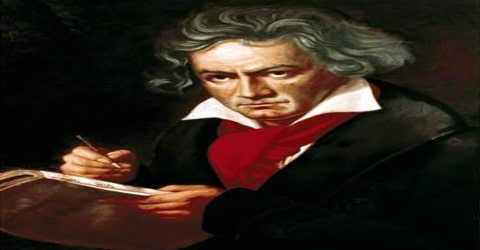
German composer Ludwig van Beethoven was baptized December 17, 1770, Bonn, archbishopric of Cologne (Germany). He was one of the greatest composers the world has ever had. A crucial figure in the transition between the Classical and Romantic eras in classical music, he remains one of the most recognized and influential of all composers. He was one among the pioneers of instrumental music in European culture and played a crucial role in the development of tonal music.
His best-known compositions include 9 symphonies; 5 piano concertos; 1 violin concerto; 32 piano sonatas; 16 string quartets; a mass, the Missa Solemnis; and an opera, Fidelio. His career as a composer is conventionally divided into early, middle, and late periods; the “early” period is typically seen to last until 1802, the “middle” period from 1802 to 1812, and the “late” period from 1812 to his death in 1827.
Though acquired deafness restricted him from actively involved in social life, it never trammeled his creativity. During the premiere of his final masterpiece, ‘Ninth Symphony’, Beethoven had to turn around to view the clapping of the audience as he had become totally deaf by then.
He displayed his musical talents at an early age and was taught by his father Johann van Beethoven and composer and conductor Christian Gottlob Neefe. At the age of 21, he moved to Vienna, where he began studying composition with Joseph Haydn and gained a reputation as a virtuoso pianist. He lived in Vienna until his death. By his late 20s his hearing began to deteriorate and by the last decade of his life, he was almost completely deaf. In 1811 he gave up conducting and performing in public but continued to compose; many of his most admired works come from these last 15 years of his life, commonly known as his “late” period.
However, despite his loss of hearing, he grew as a colossus of music, whose fame continues to be unbeaten even now. Influenced greatly by Mozart and Haydn, he enriched his style with the emotional power of romanticism. The intricacy and vastness of his works went much beyond the age, baffled his contemporaries and continues to mystify the professionals and later audiences. His operas, symphonies, and sonatas are still sung and performed all over the world.
Childhood, Family and Educational Life
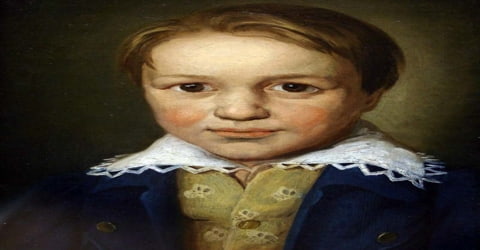
Ludwig van Beethoven was born in Bonn, Germany, on December 16, 1770. Although there is no record about it, most scholars accept 16 December as his date of birth; one reason being that, his family as well as his teacher, Johann Albrechtsberger, always celebrated his birthday on this day. The church records at the parish of St. Regius also show that Ludwig van Beethoven was baptized on 17th December 1770. Since children at that time were baptized a day after their birth, it corroborates the assumption that he was born on 16 December 1770.
Ludwig was the eldest of three children of Johann and Maria Magdalena van Beethoven. His father, a musician who liked to drink, taught him to play piano and violin. Young Ludwig was often pulled out of bed in the middle of the night and ordered to perform for his father’s drinking companions, suffering beatings if he protested. As Beethoven developed, it became clear that to reach artistic maturity he would have to leave Bonn for a major musical center.
Among his five younger siblings, only two brothers, Kasper Anton Karl Van Beethoven and Nicholas Johann Van Beethoven reached adulthood. Another brother, Franz Georg van Beethoven and two sisters Anna Maria Francisca van Beethoven and Maria Margaretha Josepha van Beethoven died in infancy.
Ludwig’s first music teacher was his father. He later had other local teachers: the court organist Gilles van den Eeden (d. 1782), Tobias Friedrich Pfeiffer (a family friend, who provided keyboard tuition), and Franz Rovantini (a relative, who instructed him in playing the violin and viola). From the outset his tuition regime, which began in his fifth year, was harsh and intensive, often reducing him to tears; with the involvement of the insomniac Pfeiffer, there were irregular late-night sessions with the young Beethoven being dragged from his bed to the keyboard. His musical talent was obvious at a young age. Johann, aware of Leopold Mozart’s successes in this area (with his son Wolfgang and daughter Nannerl), attempted to promote his son as a child prodigy, claiming that Beethoven was six (he was seven) on the posters for his first public performance in March 1778.
Sometimes now, he was admitted to a Latin grade school called Tirocinium. He was an average student, poor in spelling and sums, which led to the belief that he might have been suffering from mild dyslexia. He had himself said, “Music comes to me more readily than words.”
At the age of twelve Beethoven was a promising keyboard player and a talented pupil in the composition of the court organist Christian Gottlob Neefe (1748–1798). He even filled in as a church organist when Neefe was out of town. In 1783 Beethoven’s first published work, a set of keyboard pieces appeared, and in the 1780s he produced portions of a number of later works. In 1787 he traveled to Vienna, Austria, apparently to seek out Wolfgang Amadeus Mozart (1756–1791) as a teacher. He was forced to return to Bonn to care for his ailing mother, who died several months later. His father died in 1792.
Also in 1783, Beethoven composed three piano sonatas, entitled ‘Kurfurst’, which he dedicated to the Elector Maximilian Friedrich. Impressed, the Elector subsidized the young man’s musical studies.
Personal Life
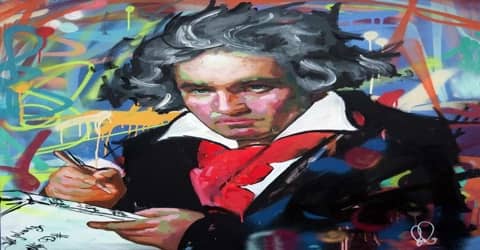
(Ludwig Van Beethoven Poster by Richard Day)
Despite numerous liaisons, Ludwig van Beethoven could not develop a lasting relationship with any woman, remaining bachelor till his death. His sole heir was his nephew Karl.
His love life was hampered by class issues. In late 1801, he met a young countess, Julie (“Giulietta”) Guicciardi, through the Brunsvik family, at a time when he was giving regular piano lessons to Josephine Brunsvik. He mentions his love for Julie in a November 1801 letter to his boyhood friend, Franz Wegeler, but he could not consider marrying her, due to the class difference. He later dedicated his Sonata No. 14, now commonly known as the Moonlight Sonata, to her.
Beethoven’s relationship with Josephine Brunsvik deepened after the death in 1804 of her aristocratic first husband, the Count Joseph Deym. He wrote Josephine 15 passionate love letters from late 1804 to around 1809/10. Although his feelings were obviously reciprocated, Josephine was forced by her family to withdraw from him in 1807. After Josephine married Baron von Stackelberg in 1810, Beethoven may have proposed unsuccessfully to Therese Malfatti, the supposed dedicatee of “Für Elise”; his status as a commoner may again have interfered with those plans.
When his brother Kasper died in 1815, he left Beethoven in charge of Karl jointly with his wife, a woman he never liked. After Kasper’s death, he fought a legal battle, ultimately winning the sole custody of his nephew.
Career and Works

By 1784, Beethoven’s father’s alcoholism deteriorated to such an extent that he could no longer support his family. Therefore, at the age of fourteen, Beethoven started his career, successfully applying for the position of the assistant organist at the court chapel, receiving a modest salary of 150 florins.
In 1783 Beethoven was also appointed continuo player to the Bonn opera. By 1787 he had made such progress that Maximilian Francis, archbishop-elector since 1784, was persuaded to send him to Vienna to study with Mozart. The visit was cut short when, after a short time, Beethoven received the news of his mother’s death. According to tradition, Mozart was highly impressed with Beethoven’s powers of improvisation and told some friends that “this young man will make a great name for himself in the world”; no reliable account of Beethoven’s first trip to Vienna survives, however.
By 1787, the Elector sent Beethoven to Vienna; possibly to study with Mozart. But within two weeks of his leaving home, his mother fell seriously ill, compelling him to return home. His mother died soon after and with that, his father went deeper into alcoholism.
For the next five years, Beethoven remained at Bonn. To his other court duties was added that of playing viola in the theatre orchestra; and, although the archbishop, for the time being, showed him no further mark of special favor, he was beginning to make valuable acquaintances. Some time previously he had come to know the widow of the chancellor, Joseph von Breuning, and she engaged him as a music teacher to two of her four children. From then on, the Breunings’ house became for him a second home, far more congenial than his own.
In 1788, at the house of von Breuning, Beethoven first met Count Ferdinand von Waldstein. Belonging to Vienna’s highest aristocracy, he not only yielded tremendous influence but also loved music. Very soon, he became one of Beethoven’s lifelong friends and a financial supporter.
In 1789 Beethoven obtained a legal order by which half of his father’s salary was paid directly to him for support of the family. He also contributed further to the family’s income by playing viola in the court orchestra. This familiarised him with a variety of operas, including three by Mozart that was performed at court in this period. He also befriended Anton Reicha, a flutist and violinist of about his own age who was a nephew of the court orchestra’s conductor, Josef Reicha.
In 1790, Beethoven received his first commission, possibly on the recommendation of Neefe, writing two Emperor Cantatas (WoO 87, WoO 88) on the death of Holy Roman Emperor Franz Joseph II and an accession of Leopold II. However, they were not performed at that time, remaining lost until 1880.
From 1790 to 1792, Beethoven composed a significant number of works (none were published at the time, and most are now listed as “WoO”, works without opus number) that demonstrated his growing range and maturity. Musicologists have identified a theme similar to those of his Third Symphony in a set of variations written in 1791. It was probably on Neefe’s recommendation that Beethoven received his first commissions; the municipal leaders in Bonn had commissioned cantatas to mark the occasion of the death in 1790 of Franz Joseph II and the subsequent accession of Leopold II as Holy Roman Emperor. The two Emperor Cantatas (WoO 87, WoO 88) he scored were never performed at the time and they remained lost until the 1880s. But they were, according to Brahms, distinctively “Beethoven through and through” and as such prophetic of the tragic style which would mark his music as distinct from the classical tradition.
In 1792, Beethoven went back to Vienna to study with the famous composer Joseph Haydn (1732–1809). Beethoven was not totally satisfied with Haydn’s teaching, though, and he turned to musicians of lesser talent for extra instruction. Beethoven rapidly proceeded to make his mark as a brilliant keyboard performer and as a gifted young composer with a number of works to his credit. In 1795 his first mature published works appeared, and his career was officially launched.
There is no record that either was ever performed until the end of the 19th century when the manuscripts were rediscovered in Vienna and pronounced authentic by Johannes Brahms. But in 1790 another great composer had seen and admired them: that year Haydn, passing through Bonn on his way to London, was feted by the elector and his musical establishment; when shown Beethoven’s score, he was sufficiently impressed by it to offer to take Beethoven as a pupil when he returned from London. Beethoven accepted Haydn’s offer and in the autumn of 1792, while the armies of the French Revolution were storming into the Rhineland provinces, Beethoven left Bonn, never to return. The album that he took with him (preserved in the Beethoven-Haus in Bonn) indicates the wide circle of his acquaintances and friends in Bonn. The most prophetic of the entries, written shortly after Mozart’s death, runs:
The spirit of Mozart is mourning and weeping over the death of her beloved. With the inexhaustible Haydn, she found repose but no occupation. With the help of unremitting labor, you shall receive Mozart’s spirit from Haydn’s hands. (Waldstein)

Beethoven lived in Vienna from 1792 to his death in 1827, unmarried, among a circle of friends, independent of any kind of official position or private service. He rarely traveled, apart from summers in the countryside. In 1796 he made a trip to northern Germany, where his schedule included a visit to the court of King Frederick William of Prussia, an amateur cellist. Later Beethoven made several trips to Budapest, Hungary.
By 1793, Beethoven had established a reputation as an improviser in the salons of the nobility, often playing the preludes and fugues of J.S. Bach’s Well-Tempered Clavier. His friend Nikolaus Simrock had begun publishing his compositions; the first is believed to be a set of variations (WoO 66). By 1793, he had established a reputation in Vienna as a piano virtuoso, but he apparently withheld works from publication so that their publication in 1795 would have a greater impact. His first public performance in Vienna was in March 1795, a concert in which he first performed one of his piano concertos. It is uncertain whether this was the First or Second.
On March 29, 1795, Beethoven made his public debut, possibly performing his “first” piano concerto. Shortly thereafter, he published a series of three piano trios as “Opus 1,” earning a great critical as well as commercial success with them.
Beethoven composed his first six string quartets (Op. 18) between 1798 and 1800 (commissioned by, and dedicated to, Prince Lobkowitz). They were published in 1801. With premieres of his First and Second Symphonies in 1800 and 1803, he became regarded as one of the most important of a generation of young composers following Haydn and Mozart. He also continued to write in other forms, turning out widely known piano sonatas like the “Pathétique” sonata (Op. 13), which Cooper describes as “surpassing any of his previous compositions, in strength of character, depth of emotion, level of originality, and ingenuity of motivic and tonal manipulation.” He also completed his Septet (Op. 20) in 1799, which was one of his most popular works during his lifetime.
In 1796, he traveled to northern Germany, visiting among other places, the court of King Frederick William of Prussia in Berlin, possibly for a suitable position. During this period he composed the Op. 5 Violoncello.
In 1808 Beethoven received an invitation to become music director at Kassel, Germany. This alarmed several of his wealthy Viennese friends, who formed a group of backers and agreed to guarantee Beethoven an annual salary of 1,400 florins to keep him in Vienna. He thus became one of the first musicians in history to be able to live independently on his music salary.
Like all pianists of the late 18th century, Beethoven was raised on the sonatas and teachings of Carl Philipp Emanuel Bach, the chief exponent of “expressive” music at a time when music was regarded as the art of pleasing sounds.
In May 1799, he taught piano to the daughters of Hungarian Countess Anna Brunsvik. He also had a few other students. From 1801 to 1805, he tutored Ferdinand Ries, who went on to become a composer and later wrote Beethoven remembered, a book about their encounters. The young Carl Czerny studied with Beethoven from 1801 to 1803. Czerny went on to become a renowned music teacher himself, instructing Franz Liszt, and on 11 February 1812 gave the Vienna premiere of Beethoven’s fifth piano concerto (the “Emperor”).
On April 2, 1800, he performed his ‘Symphony No. 1 in C major’ at Vienna’s Royal Imperial Theater. Although he did not really like this particular work later in life it established him as one of the most celebrated composers of his time.
His compositions between 1800 and 1802 were dominated by two large-scale orchestral works, although he continued to produce other important works such as the piano sonata Sonata quasi una fantasia known as the “Moonlight Sonata”. In the spring of 1801, he completed The Creatures of Prometheus, a ballet. The work received numerous performances in 1801 and 1802, and he rushed to publish a piano arrangement to capitalize on its early popularity.
The turn of the century concluded what is generally referred to as Beethoven’s first period, although some usefully extend it to the summer of 1802 when he wrote the “Heilgenstadt Testament”; during this period his art stayed mainly within the bounds of 18th-century technique and ideas. Most of his published works during that time are for the piano, alone or with other instruments, important exceptions being the String Trio in E-flat Major, Opus 3; the Three String Trios, Opus 9; the Six String Quartets, Opus 18; and the First Symphony. Beethoven extended his range slowly and methodically, but he was still a piano composer par excellence.
In the spring of 1802, Beethoven completed his ‘Second Symphony’; but it was premiered almost a year later in April 1803, earning huge profit from him. Also from 1802, his brother Kasper began to manage his financial matters, securing better deals from his publishers.
Beethoven is reported to have dated his hearing loss from a fit he suffered in 1798 induced by rage at the interruption of his work has fallen over, he got up to find himself deaf. His hearing only ever partially recovered and, during its gradual decline, was impeded by a severe form of tinnitus. As early as 1801, he wrote to friends describing his symptoms and the difficulties they caused in both professional and social settings (although it is likely some of his close friends were already aware of the problems).
Despite growing deafness, he now started producing an astonishingly large volume of music. From 1803 to 1812, he composed five sets of piano variations, seven piano sonatas, six symphonies, four solo concerti, four overtures, four trios, five string quartets, six string sonatas, two sextets, one opera, and 72 songs.
In 1815 he gave up hope of performing publicly as a pianist. After 1818 he was no longer able to carry on conversations with visitors, who were forced to communicate with him in writing. The second problem arose when he became Karl’s guardian upon the death of his brother in 1815. His nephew, Karl proved to be unstable and a continuing source of worry to an already troubled man.
In 1808, Beethoven received an invitation for the directorship of Kassel. To keep him in Vienna, his wealthy patrons pledged him an annual salary of 1, 400 florins. Thus he became the first musician to be freed from the drudgery of service and concentrate full time on composing. This period between 1803 and 1812 is known as his ‘middle’ or ‘heroic’ period. Most popular among his works of this period were ‘Moonlight Sonata’, ‘Kreutzer’ violin sonata, his opera, ‘Fidelio’ and his symphonies, numbering three to eight.
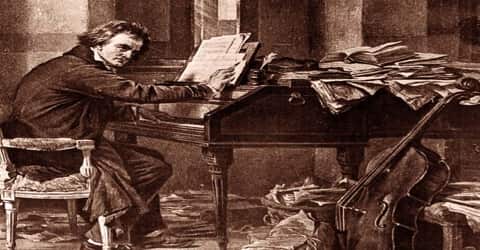
Over time, his hearing loss became profound: at the end of the premiere of his Ninth Symphony in 1824, he had to be turned around to see the tumultuous applause of the audience because he could hear neither it nor the orchestra. His hearing loss did not prevent him from composing music, but it made playing at concerts a lucrative source of income increasingly difficult. After a failed attempt in 1811 to perform his own Piano Concerto No. 5 (the “Emperor”), which was premiered by his student Carl Czerny, he never performed in public again until he directed the premiere performance of the Ninth Symphony in 1824, which involved him giving cues to conductor Michael Umlauf.
In 1819, Beethoven started working on the ‘Diabelli Variations’ and the ‘Missa Solemnis’. Unfortunately, due to ill-health and court cases, he could not complete the last mentioned work before 1823. Meanwhile, in 1822, the Philharmonic Society of London commissioned him to write a symphony. The commission spurred him to complete his ‘Ninth Symphony’. It was performed first on 7 May 1824 at the Kärntnertortheater to a standing ovation along with ‘Missa Solemnis’ and again on 24 May 1824. It was his last public concert.
Beethoven’s deafness and his temper contributed to his reputation as an unpleasant personality. But reliable accounts and a careful reading of Beethoven’s letters reveal him to be a powerful and self-conscious man, totally involved in his creative work but alert to its practical side as well, and one who is sometimes willing to change to meet current demands. For example, he wrote some works on commission, such as his cantata (a narrative poem set to music) for the Congress of Vienna, 1814.
In 1822, Prince Nikolas Golitsin of St. Petersburg had commissioned him to write three string quartets. In 1824, after completing the ‘Ninth Symphony’, Beethoven turned to it, producing a series of string quartets, together known as ‘Late Quarters’. This was his last major work.
Beethoven’s deafness affected his social life, and it must have changed his personality deeply. In any event, his development as an artist would probably have caused a crisis in his relationship to the musical and social life of the time sooner or later. In his early years he wrote as a pianist-composer for an immediate and receptive public; in his last years, he wrote for himself.
Awards and Honor
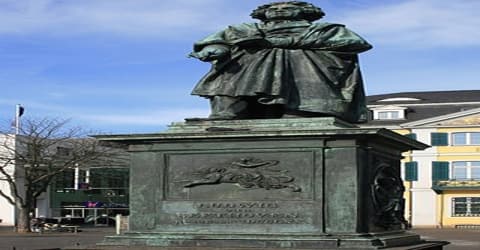
(Beethoven Monument in Bonn, Münsterplatz)
The Beethoven Monument in Bonn was unveiled in August 1845, in honor of his 75th anniversary.
A statue to Mozart had been unveiled in Salzburg, Austria in 1842.
The third largest crater on Mercury is named in his honor, as is the main-belt asteroid 1815 Beethoven.
The Ira F. Brilliant Center for Beethoven Studies serves as a museum, research center, and host of lectures and performances devoted solely to this life and works.
There is a museum, the Beethoven House, the place of his birth, in central Bonn. The same city has hosted a musical festival, the Beethovenfest, since 1845. The festival was initially irregular but has been organized annually since 2007.
Death and Legacy
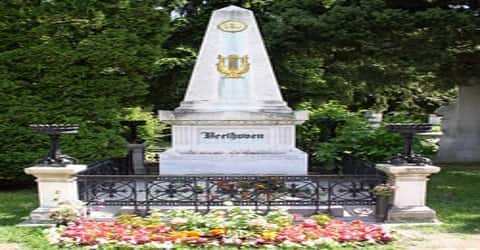
Beethoven died on 26 March 1827 at the age of 56 during a thunderstorm. His friend Anselm Hüttenbrenner, who was present at the time, said that there was a peal of thunder at the moment of death. An autopsy revealed significant liver damage, which may have been due to heavy alcohol consumption. It also revealed considerable dilation of the auditory and other related nerves. His funeral, which took place on 29 March 1827, was attended by around 10,000 people. After a requiem mass at the church of the Holy Trinity, he was buried in the Währing cemetery. In 1888, his mortal remains were moved to Zentralfriedhof.
On 12 August 1845, Beethoven Monument was unveiled in Bonn. The city also holds a concert hall named Beethovenhalle while his birth house at Bonngasse 20 has been turned into a museum.
His remains were exhumed for study in 1862 and moved in 1888 to Vienna’s Zentralfriedhof. In 2012, his crypt was checked to see if his teeth had been stolen during a series of grave robberies of other famous Viennese composers.
Common in Beethoven biographies is the focus on Beethoven’s awareness of current events and ideas, especially his attachment to the ideals of the French Revolution (1789–99; the revolt of the French middle class to end absolute power by French kings) and his faith in the brotherhood of men, as expressed in his lifelong goal of composing a version of “Ode to Joy,” by Friedrich Schiller (1759–1805), realized at last in the Ninth Symphony. Also frequently mentioned is his genuine love of nature and outdoor life.
Ludwig van Beethoven is best remembered for his ‘Symphony No. 9 in D minor, Op. 125’. Today, the work is considered to be the best-known work in the entire Western musical canon. In 2001, its original hand-written manuscript was added to the United Nations Memory of the World Programme Heritage list.
No one had ever heard anything like Beethoven’s last works; they were too advanced for audiences and even professional musicians for some time after his death in 1827. Beethoven was aware of this. It seems, however, he expected later audiences to have a greater understanding of and appreciation for them. Beethoven reportedly told a visitor who was confused by some of his later pieces, “They are not for you but for a later age.”
Information Source:
